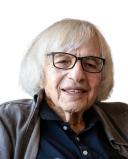Politics
How We Grapple With "Gunism"
The dangerous mythology surrounding the gun.
Posted July 28, 2023 Reviewed by Tyler Woods
Key points
- A gun is not just a lethal device but a psychological force.
- The concept of the gun as “equalizer” played an important role in slavery.
- A new form of "gunism," in which more guns became the solution to every mass killing, has taken hold.
In the late 1960s, I had several conversations with Richard Hofstadter, one of the great historians of America, in which he reflected on his life’s work. What disturbed him most, he told me, was America’s inability to come to terms with the gun. He associated this inability with his observations on what he called the "paranoid style" in American politics. The despair in his voice still reverberates in me.
Roughly 40,000 Americans die each year from some form of gun violence. According to the Gun Violence Archive, there have already been at least 390 mass shootings in America in 2023, and the overall number per year has gone up dramatically in the last decade.
I would claim that a gun is not just a lethal device but a psychological force in this terrible drama. But what historical currents helped make the gun both a central technological instrument and a psychological force? How did we come to what I call gunism? First, we must look at the American frontier and the development of the mythology of the “Wild West.”
Richard Slotkin, the cultural critic and historian, speaks of America’s frantic expansion from the Atlantic to the Pacific oceans and the accompanying mythology of gun-slinging white settlers boldly conquering the wilderness. That mythology covers over an actual record of subjugation of Native Americans and Black slaves with extensive bloodshed.
Much of the mythology centers around a handgun created by Sam Colt which, according to Slotkin, attained “the magic of the tool…[and became] the gun that won the west…that created American democracy and made equality possible.” Slotkin refers particularly to the frequently repeated slogan “God created men, but Sam Colt made them equal.”
This concept of the gun as “equalizer” also played an important role in slavery. As Slotkin explains, a lone white slave owner or overseer could feel themselves to be “more equal than others” despite being outnumbered, because “if you've got a pair of Colt's pistols in your pocket, you are equal to twelve slaves... I [the gun owner] am more equal than others because I've got extra shots in my gun.”
Slotkin also describes a dynamic he calls “regeneration through violence”—the resort to gun violence on the part of settlers losing their religious or communal convictions. That pattern, he tells us, contributed to the unclear but always influential Second Amendment to the Constitution: “A well-regulated Militia, being necessary to the security of a free State, the right of the people to keep and bear Arms, shall not be infringed.”
Historian Carol Anderson goes further, claiming that, “James Madison crafted…[the] language [of the Second Amendment] in order to mollify the concerns coming out of Virginia [for] full control over…state militias…used in order to quell slave revolts.”
But gunism, in the sense of rendering the gun as a central actor and tool, was not limited to white settlers in the American frontier or to slave owners. Native Americans also played an important role. They were able to obtain large numbers of guns from trade with the British and purchases from settler authorities. Tribes competed with one another to control gun markets. They could form alliances with settler groups and with Native American enslavers of members from other tribes. At times, these Native Americans could be as well armed as settlers.
Yet, as is well known, tribes were subject to a series of so-called “Indian Wars” in which raids by Native Americans would be followed by military slaughters organized by settler groups. Policies of “Indian Removal” could be justified—and intensified—by the tribes’ possession of guns.
Significantly, the Wounded Knee Massacre at the Lakota Pine Ridge Indian Reservation in South Dakota in 1890—the slaughter of as many as 300 Lakota by U.S. army troops—followed upon army attempts to disarm the Lakota camp. Also fueling that massacre was the violent suppression of the banned religion known as the “Ghost Dance,” which expressed a threatening, messianic vision of the restoration of Native American power.
Some Native American tribes could also come to include large numbers of African slaves. With the Cherokees and with the Seminoles of Florida, there was much intermarriage with escaped Black slaves, and a shared culture developed that encouraged others to escape from slavery and join them. So much so that an American general expressed a fear that this Seminole subculture would ignite the whole South in a violent uprising.
Fear of an armed uprising on the part of Black slaves was also reflected in the creation of the “slave patrols.” Consider the wording of the North Carolina Slave Patrol Oath: "I [patroller's name], do swear, that I will as searcher for guns, swords, and other weapons among the slaves in my district, faithfully, and as privately as I can, discharge the trust reposed in me as the law directs, to the best of my power. So help me, God."
We can say, then, that guns were at the center of the British imperialism that was at play in settlers’ disseminating them so widely; of American slavery; of Native American rebellion; and of profound white fear of an armed rebellion on the part of joint Native American and Black forces.
But a new form of gunism, in which more guns became the solution to every mass killing, has taken hold in the 20th century, supported by corporate interests. This malignant ideology began in the mid-1970s, when a radical division of the NRA brought the organization into national politics with an emphasis on opposing every conceivable form of gun control.
Ronald Reagan—the first presidential candidate to be endorsed by the NRA—enlisted guns as a centerpiece of his anti-government stance, claiming that “from guns, people are the equal of their government” and that “the right of the citizen to keep and bear arms must not be infringed if liberty in America is to survive.”
How can we grapple with radical gunism and the mythology that surrounds it? What is little known or acknowledged is that gun control actually existed in the early moving frontier. A stress on this truth could strengthen our contemporary struggles for gun reform by providing a historical example of liberation from gunism.
Guns were frequently prohibited in frontier cities and towns. There were conflicts between authorities pushing this exclusion and aggressive cowboys and others defying it, but nobody in that conflict claimed (as the NRA does today) that the gun problem could be solved by more guns.
We are faced now with interrupting this narrative of gunism by emphasizing that the early “Wild West” did, indeed, have its gun control. We should concentrate on this single important lesson from that effort at early gun control: namely, that more guns brought into a populated environment increases violence and killing. And conversely, limiting or eliminating guns brought into a populated environment diminishes violence and killing.
References
Anderson, Carol. “Historian Uncovers The Racist Roots Of The 2nd Amendment.” By Dave Davies. Fresh Air, NPR. June 2, 2021. https://www.npr.org/transcripts/1002107670
Jancer, Matt. “Gun Control Is as Old as the Old West: Contrary to the popular imagination, bearing arms on the frontier was a heavily regulated business.” Smithsonian. February 5, 2018. https://www.smithsonianmag.com/history/gun-control-old-west-180968013/
Richardson, Heather Cox. “May 6, 2023.” Letters from an American. https://heathercoxrichardson.substack.com/p/may-62023?utm_source=profil…
Slotkin, Richard. “Segment: Richard Slotkin on Guns and Violence.” By Bill Moyers. December 13, 2013. https://billmoyers.com/segment/richard-slotkin-on-guns-and-violence/
Slotkin, Richard. Regeneration Through Violence: The Mythology of the American Frontier, 1600–1860. Norman: University of Oklahoma Press, 2000 (1973).




